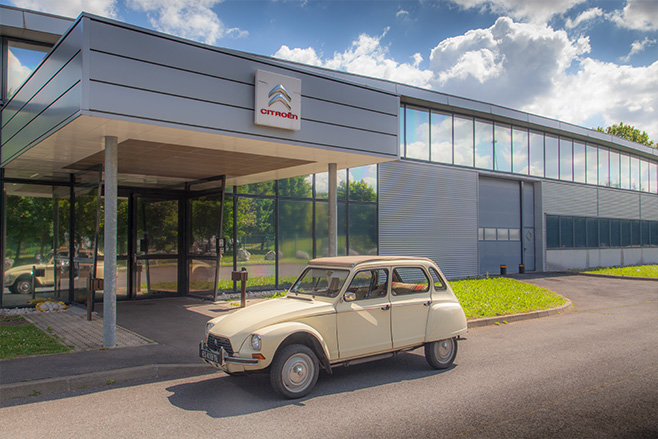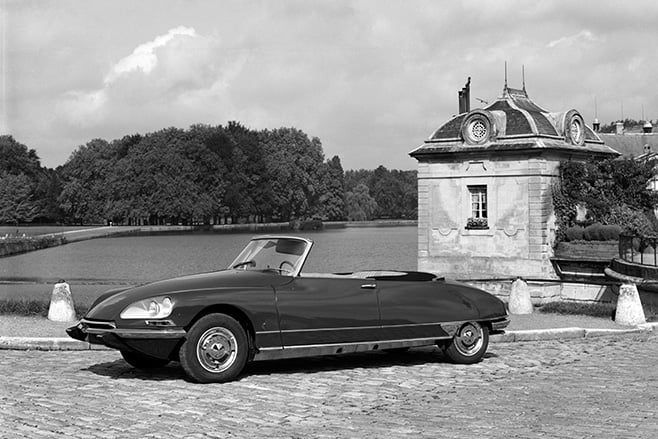I WAS but a kid of 21 when LH254 flew me into Paris on Sunday, 26 December, 1965.
Seduced by the beyond-beautiful Citroen DS, an aerodynamic wonder already a decade old yet still utterly contemporary, my plan was simple: catch a bus to central Paris, find a DS taxi – and only a DS – for the ride to Le Grand Hotel. Ignoring the Peugeots and Renaults at the taxi rank, I waited intent on landing my first ride in Citroen’s elegant sedan. Finally, wallowing in the unmatched comfort of its vast rear seat, I knew it was the most comfortable car I’d experienced. Who said you should never meet your heroes?
A couple of days later I hired a Citroen Ami 6, the weirdly styled, rebodied 2CV. I wanted the sedan with its reverse-angle rear window – like a ’59 Ford Anglia – but they could only offer a wagon. On snow-covered roads, I drove to Le Mans to lap the famed road circuit – a thrill, even with a mere 602cc, 19kW and 105km/h top speed. My notebook tells me I “duelled with a girl in pigtails, also driving an Ami”, though I doubt she was aware of our contest. Less than two years later I tested a DS21 Pallas, writing: “The Citroen is a long distance runner, out front and alone.”
In 1971, three months into the editorship of Wheels, my enthusiasm for Citroen pushed the new GS to the cover. Sales bombed and a Citroen hasn’t appeared on the cover since. Fifteen years later, circumventing import restrictions, I bought one of the last new 2CV Speciales, and now I can’t believe I sold that most honest of all cars. Two Citroens – 2CV and SM – featured on my 2011 list of the 50 Greatest Cars Ever.
Citroen is one of my car Gods.

Frustrated at not being able to breach the secrecy while living in Europe, I retired disillusioned, knowing one of the few genuine possibilities on my now-short automotive bucket list remained unfulfilled.
Not quite. At the Wheels’ COTY dinner in January,I mentioned the bunker to Citroen’s new press person. A few months later he asked if I’d like to see what’s called the Citroen Conservatoire. Retirement, I instantly decided, can be ignored if it means realising a dream.
Tucked off to one side of Citroen’s old Aulnay-sous-Bois plant, which closed in 2013, and close to the A1 autoroute heading north to Charles de Gaulle airport is a low, nondescript grey and mirrored-glass building surrounded by near empty carparks. One double-chevron logo adorns the awning of the entrance of a structure that was purpose-built to house nearly a century’s worth of Citroens, including several rare, one-of-a-kind models and an example of nearly every model the company has produced.

During the 1980s and ’90s, when Citroen’s creativity was minimal and it was building many boring cars under a PSA regime that deliberately set out to ignore Citroen’s history and dilute its reputation for avant garde designs, the company consciously turned its back on the quirky models from the past, including the Traction, 2CV and DS.
Fortunately for us, under a more enlightened management, Citroen has come through the denial period and now takes its rich history seriously.
Almost every piece of Citroen’s collection is now located in the Conservatoire, though not everything is on display. About 300 of the approximately 400 cars in the collection are on the floor at any given time and most are in excellent running condition and used on a regular basis. The others are on loan for classic car events and publicity campaigns.

At first the Conservatoire wasn’t open to the public, only Citroen car clubs. Today, ¤7 ($10) buys a 90-minute guided tour. Book with [email protected]. You won’t regret it, I promise.
There’s no point comparing the Conservatoire to the glossy extravagance of the German carmaker museums; this one is slightly spartan, with no interactive displays or coloured lights and (wonderfully) no elevator music. So there is no distraction from the main focus: row upon row of cars in what is undoubtedly the world’s most complete collection of Citroens; a hanger-sized treasure crammed with cars that literally take your breath away. Mine anyway.

The density of innovation on display is obvious and includes a rotary-powered RE-2 Citroen helicopter, the twin-engined 2CV Sahara, rotary M35 coupe, dune buggies and Sebastian Loeb’s World Rally Championship-winning cars.
Most cars I knew, if even vaguely, but one gold mystery car confused me. Built in about 2000, it was only a foam mock-up based on the Xantia and lacked an engine and interior. Though ordinary in appearance, this little-known styling exercise was intended for a Detroit show as a proposal for Citroen to re-enter the American market. Nothing came of this no-name model.
It’s possible to trace the evolution of the 2CV from the 1936 TPV – French for very small car – single-headlight prototype to the final Portuguese production car in July 1990, the last of 5,114,966 units.

At the other end of the scale are two presidential vehicles: the DS 21 Presidentiale (a one-off by Henry Chapron, used by Charles de Gaulle and stretching to 6.53 metres long, weighing 2660kg and powered by a regular DS 2.1-litre four) and the 1972 SM Presidentiale (a 5.6m four-door open cabriolet version of the Maserati-powered SM).
The thread that binds all these wonderful cars is creativity, imagination and genius. Is it too much to hope that the creation of DS as a stand-alone brand allows a revival of Citroen’s authentic character to push the boundaries of technology and style?
Goddess of style
I’M NOT alone in thinking Citroen’s DS is the most beautiful car in the world. My addiction may colour such judgement, yet I contend that the combination of absolute purity of line, originality of concept, and radical – advanced is too mild a word for the breathtaking DS – engineering and design created a car of unsurpassed beauty.
I still stop and stare whenever I see a DS, to admire the simplicity of its shape, the exquisite proportions of Flaminio Bertoni’s sculptured contours and the clarity of its detail design. Such is the depth of its cleverness, this most intellectual of cars can still surprise almost 60 years after it first stunned crowds at the Paris salon in 1955.

The DS employed interconnecting suspension using high-pressure hydropneumatics and the engineers were brave enough to use the hydraulic pump and accumulator as a source of power for the brakes (pioneering the use of discs on a production car), steering and a Citroen-made semi-automatic gearbox with self-operating clutch. Inevitably, deliberately, the DS felt like no other car to drive.
It’s now common knowledge that the DS should have been powered by a horizontally opposed six-cylinder boxer engine – air and water cooling were tried at the prototype stage – but instead ended up with an evolution of the old four-cylinder lump from generations of Traction models. What I didn’t know until the Conservatoire was that Citroen explored a variety of different engines during the DS’s near 20-year life.
Among many on display, including the oldest known example (a prototype produced in July 1955), is a hard-worked 1967 DS mule, powered by a supercharged two-stroke 1.8-litre V4, with the compressor driven by an independent 200cc four-stroke engine, all intended to meet California’s proposed 1975 emission standards. Other DS engine projects included a 2.1-litre 90-degree sohc V6 and a 3.0-litre V8. The coming of electronic fuel injection and development of a new range of fours of up to 2.3 litres closed the internal debate.
As part of the DS’s 60th anniversary celebrations, Citroen also revealed many more of Bertoni’s styling sketches for the VGD project that became the DS and started as early as 1938. Interrupted by WW2, Bertoni began work again in 1945, the sketches tracing the car’s evolution until the front-end design was frozen in July 1954, the unique high-mounted ‘trumpet’ indicators coming just months later.
The DS was probably the furthest single step ever taken by a popular car company.
Sign up here to receive the latest round-up of Wheels news, reviews and video highlights straight to your inbox each week.





